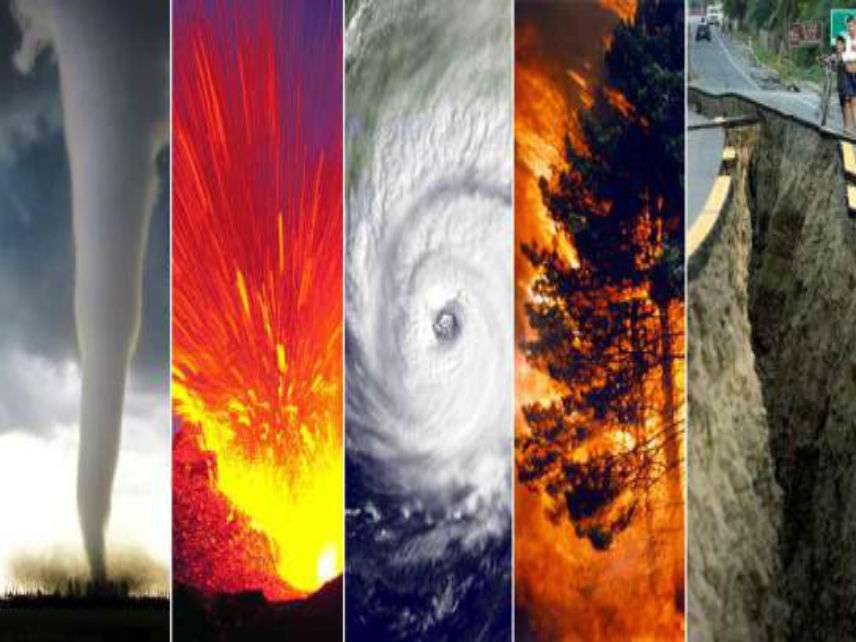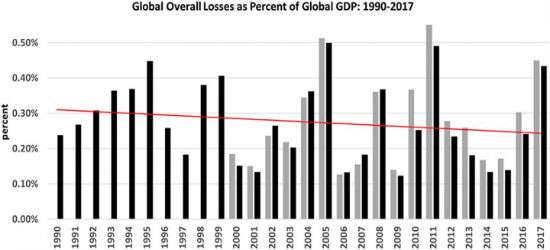Natural Disasters Are Destroying a Lower Percentage of Humanity's Stuff Since 1990
Absolute losses increased, but the proportion of losses relative to global GDP has dropped

"Economic losses caused by climate-related disasters have soared by about two and a half times in the last 20 years," reported Reuters citing a new United Nations report last month. The report, Economic Losses, Poverty & Disasters 1998-2017, cited direct losses of $2.9 trillion, of which 77 per cent were attributed to extreme weather events amounting to $2.25 trillion in losses. The report notes that this is a "dramatic rise" of 151 per cent compared with losses reported between 1978 and 1997, which amounted to $895 billion. That sounds bad and it is; after all hundreds of thousands of people were killed or injured in these disasters plus losing their houses and businesses.
But is toting up annual absolute losses really the best way to measure how disaster trends are affecting humanity? Actually, the United Nations doesn't think so. The U.N.'s General Assembly endorsed in 2015 the Sendai Framework for Disaster Risk Reduction which sets as a global target the reduction of "direct disaster economic loss in relation to global gross domestic product (GDP) by 2030." This target recognizes that as the world grows wealthier that people are building much more stuff that can to be exposed to natural disasters.
The U.N. report observes that with the notable exception of Puerto Rico (due to the destruction of Hurricane Maria) that the top 10 countries that have lost the highest proportion of their GDPs to disasters are all poor countries including places like Haiti, Honduras, Mongolia, and North Korea.
In a new study in Environmental Hazards, University of Colorada political scientist Roger Pielke, Jr. reports that while absolute disaster losses have been increasing since 1990, percentage losses have been declining. Using loss data from reinsurance companies Munich Re and Aon Benfield, the study finds that in constant 2017 US dollars, both weather-related and non-weather related catastrophe losses have increased, with a 74 percent increase in the former and 182 percent increase in the latter since 1990. However, since 1990 both overall and weather/climate losses have decreased as proportion of global GDP.

Eyeballing the graph suggests that the annual disaster losses have trended downward from 0.3 to about 0.25 percent of global GDP since 1990. That means that some progress has been made toward meeting the Sendai Framework's global target of reducing direct disaster economic loss in relation to global gross domestic product (GDP) by 2030.
Pielke does warn that "extending this trend into the future will require vigilance to exposure, vulnerability and resilience in the face of uncertainty about the future frequency and magnitude of extreme events." Mother Nature never gives up trying to kill us and wreck our things.


Show Comments (1)